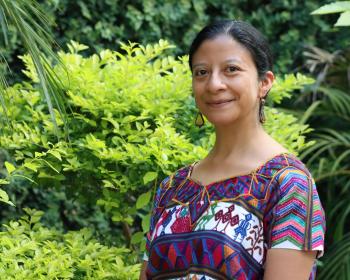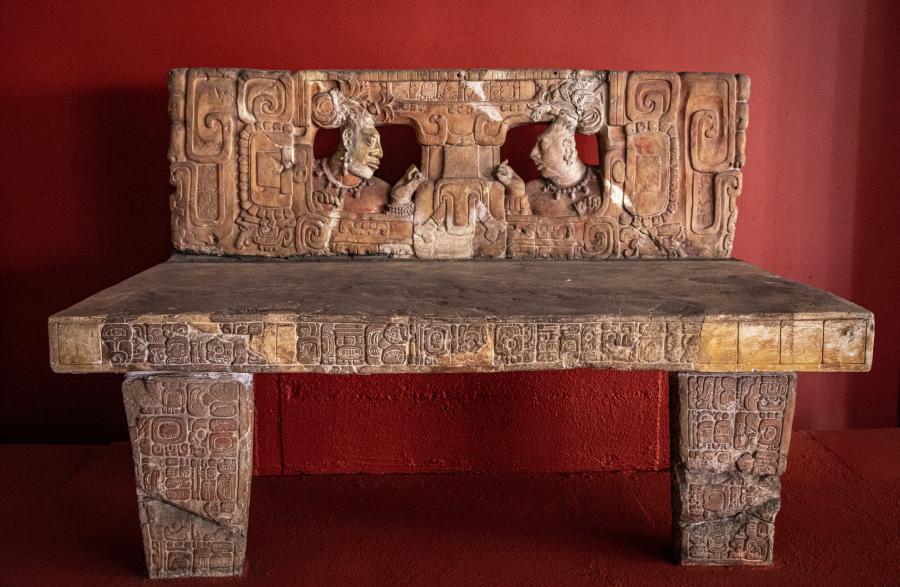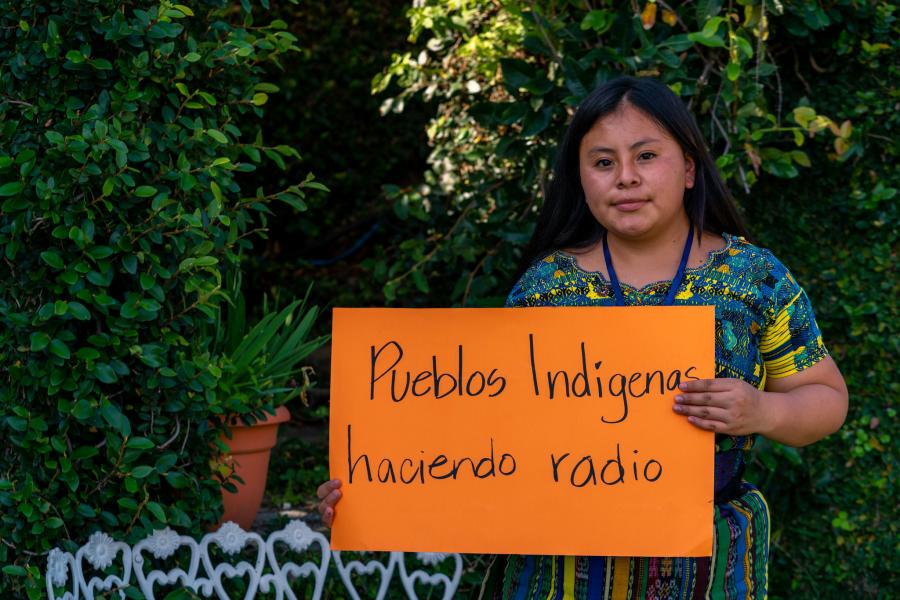A former crafts fair trader shares the lessons he learned when he mixed business and social justice.
Fair trade companies are usually born with the best intentions: they are for-profit enterprises whose founders believe they can do well while doing good. But fair trade is a complicated business that appears deceptively simple, particularly when dealing with crafts rather than commodities. It involves much more than just buying low and selling high. As with any enterprise, it is necessary to do a lot of research before engaging in fair trade. The last thing you want to do as a prospective fair trader is to claim—much less believe—that you are helping artisans, when in reality you are contributing to their exploitation.
The central tenets of fair trade necessitate having a direct relationship with the producers, creating cooperative workplaces, paying fair wages with partial pay in advance, purchasing the goods at a fair cost with an additional social premium, providing financial and technical training to the producers, and engaging in environmentally sustainable practices. Forgoing even one of these steps negates the premise of the system.
Most people stumble into fair trade through some degree of chance; my story is no different. I was a university student studying Spanish in Guatemala when I happened to meet some women from a weaving coop in Nebaj. One moment I was helping them repair the roof of their cooperative’s office, and the next they were asking me questions about what products I thought would sell in the United States and whether I would help them sell their work. I did not have much interest in becoming involved in fair trade at that time, but over the next several months as I traveled around Guatemala visiting crafts cooperatives, I began to notice that they all faced the same set of difficulties. They all lacked good access to markets, partially because they did not understand the logistics of accessing markets. Just as problematic, they all lacked capacity in some area of business or production.
After visiting about a dozen cooperatives and being continually asked by their members whether I could help sell their products, I became more enthusiastic about fair trade. Within the year, I formed a fair trade company that bought woven and crocheted cloth and hand-blown glassware from 14 worker-owned cooperatives in the western highlands of Guatemala and sold them to just over 100 retail stores in the United States and one store in Denmark. Even though mine was a small venture, I was often the largest single client for these cooperatives. The company that I started was in business for five years; we lost money in each of the first three years, showed a small profit in the fourth year, and lost money again in the final year. I financed the business mostly with my own money, small loans, and with some investment from friends and family.
In addition to importing into the United States and wholesaling to small retail stores, I ran a small store in Quetzaltenango (Xela), Guatemala, where cooperatives could consign products from their excess inventory. Quetzaltenango is the second-largest city in Guatemala and attracts foreign tourists, a good number of whom come to study Spanish at the city’s many language schools. My business partners also ran a weaving school where members of the cooperatives would offer weaving lessons to tourists. Over five years, nine different individuals worked for the company, but never more than three at any given time. For the final two and a half years, the staff was made up of three people: an indigenous Guatemalan weaver, an American weaver and textile designer, and me.
When I started the business I had no clear idea of what I was getting myself into. If I had it to over again, I would, but I would do many things differently. But of all the lessons I learned, there is one that stands out above all others: the need for complete transparency at every level of the fair trade system. This means that the trader must learn all aspects of the business, inside and out, to ensure that this knowledge gets transferred to the producer. Many of the articles in this issue of Cultural Survival Quarterly highlight the disconnect in the chain of fair trade from the producers’ point of view. But it also is important to examine the importer’s role in this relationship, since all too often it is the importer who is responsible—whether unwittingly or intentionally—for the severed links. By sharing my own experiences as a crafts fair trader, I hope to convince anyone about to embark on his or her own fair trade venture to engage in this level of openness.
If you are serious about becoming a fair trader, you should work from the outset on a plan toward a sustainable business model; in other words, one that does not rely exclusively on you. This requires that you be non-proprietary in matters of sourcing and marketing information. It also means that you should plan to gradually phase yourself out of the process: even if you envision a lifetime partnership with your artisan group, the business must be able to function successfully without your involvement. Remember that “business as usual” is not always knowingly exploitative; while the recommendations that follow may initially seem burdensome, they can help you avoid the pitfalls of exploitation. Also keep in mind that a fair trade operation does not have to be perfect. The “fair” part is that you are sharing the opportunities that come from living in a country with access to credit, jobs, travel visas, and free-market enterprise.
Buy Direct
Fair trade is all about long-term relationships between producers and customers. As the fair trader, you should buy directly from the artisan, not from a third party representing the artisan—particularly if that third person has some economic interest in the transaction. This means that you must learn the artisan’s language and be able to communicate without an interpreter, who might also have his or her own vested interest in the transaction. If you rely on a mediating party to translate for you, you will never know whether the artisan is getting a fair deal. At the very least, it is essential to find a translator who has the interest of the artisan at heart, (such as a member of the artisan’s family) rather than a personal commercial interest.
Despite their best intentions, different people along the chain of custody may make different assumptions about how things work. They may think they have good information about a part of the chain that they don’t manage, but they may be mistaken. Without direct communication with the artisan, you will never know for sure. When a question arises, you should obtain many people’s perspectives and compare the answers from each person to construct a complete picture. Taking good notes is essential. If possible, you should also arrange for the artisan to learn your language; this will ease your communications, as well as help the artisan find additional clients.
Establish a Cooperative Workplace
If you are buying from a cooperative, you should ask to attend a regular meeting of the membership. Talk to as many people in the organization as possible to see if it really functions democratically. If it is not a cooperative, talk to people at all levels of the business to determine whether it is a fair business. You might be buying from individual artisans or a family, but remember that exploitation can and does exist within family businesses. Find out if there is some formal understanding or charter for the business that defines each member’s role. Also, make sure you establish several relationships within the producer group; do not rely solely on one person’s perspective of the business. You need a multiplicity of views in order to form an accurate picture.
Pay a Fair Wage
What does “wage” mean in crafts? How does a trader reasonably determine fair compensation for piece work? As in all aspects of craft fair trade, there are no absolutes—but there are guidelines. In the case of determining a fair wage: local context matters. Salaries are not equal. The cost of living is different in different places, which makes it difficult to create a standardized model for determining fair wages. But it is possible to think in terms of equivalents. For example, what does it cost to buy a house in Sololá, Guatemala, versus Boston, Massachusetts? What does it cost to send children to school? Health care expenses are complicated to assess, but what does it cost to see a doctor and buy medicine for relatively common ailments? What is the cost of food? This is not a comparison of similar products, but of staple foods, such as rice, beans, and potatoes. It will help to find a government or U.N. statistical index on the international cost of living in the area in which you hope to do fair trade, but this should not be your only reference point. Often these indices are skewed because they do not take into account rural indigenous people, so if you do use such an index, you will need to make sure it represents all of the country’s citizens.
To understand the true cost of buying direct, and therefore be able to set a fair wage, you need to familiarize yourself with the entire production process and be able to tracethe chain of custody of the finished products. You need to understand the labor costs at each step in production, as well as how much each step costs in materials and transportation. In the case of a woven item, for example, you must know the costs of the fiber, thread, thread dyeing, wholesale thread, and retail thread, not to mention the costs for the weaver, the sewer, and the salesperson. Finding these costs entails knowing not only where each material comes from and how it is transported, but also the cost of the labels and tags, buttons and zippers, and so forth. Finding the balance between quality and price is also crucial; to do this, you will need to learn about all phases of the production process as fully as possible.
The chain of custody in production includes the transfer of an item from artisan, to artisan organization, to merchants and middlemen, to shippers and truckers, to importers, wholesalers, retailers, and finally to consumers. Once you understand this process, you can compare the wage, or price, to the market. You will find it helpful to learn what other workers get paid for other types of work in the area. Then, consider the alternative wage-earning opportunities. Does being an artisan serve other purposes? For instance, does the production of the item preserve or continue some culturally significant tradition? What is the relationship between craft production and other household/subsistence activities? Does craft production serve as an auxiliary way to earn cash, even if it is only a little cash? Does artisanship allow for increased flexibility in child care or field work?
In Chiabal, Guatemala, for example, due to the extreme altitude, the local economy is limited to sheep herding and potato farming. Many people in Chiabal earn a living by selling wool to merchants from Momostenango, where local weavers use the wool to make blankets. The people of Chiabal don’t do much weaving themselves, but they do crochet while they shepard their sheep—particularly coin purses for export. While the income they earn from their crafts (approximately 10 quetzales per day, or about U.S. $1.30) is less than what they would likely earn as day laborers on the lowland plantations (approximately 14 quetzales, or U.S. $1.80), craft production allows them to remain in their communities while earning supplementary income. Just as importantly, it serves as a productive way to pass long hours in the pastures.
Provide Prefinancing
As a rule, you should always pay a 50 percent deposit when you place an order to produce a good. At a minimum, this will cover the costs of the materials. Just as importantly, it shows good faith. In some cases, prefinancing serves as an excellent investment, as it can allow the artisan to purchase bulk materials at substantially lower costs. Keep in mind that you will almost certainly have better financing opportunities and a lower interest rate—even at 18 percent on a credit card—than the artisan.
Make Available Financial and Technical Training
For your fair trade operation to be successful, you need to share information with the artisans. If you learn some new financial or business skill, try to pass it on. Introduce the artisans to other potential clients, rather than guarding those relationships as trade secrets. With respect to your financials, make sure that your books are in good order. Even if your trade operates on a small scale, it is imperative that you establish and maintain separate accounts for business and personal use. Take courses to learn how to manage the financial part of the business if necessary, and make the course available to the artisans if possible. Then, sit down with the artisans and work through the production chain to document all the financial transactions. You may discover through this process that the artisans are just breaking even from the cost of the materials; if this is the case, you should use this information to re-evaluate the fair wage you have established.
Pay a Social Premium
In the fair trade coffee business, coffee roasters and importers pay a “social premium” of an additional five cents per pound of raw beans to the producer cooperative. In fair trade crafts, the social premium is less formal, and therefore more difficult to measure. The fair trade craft importer can negotiate this premium with the artisan/producer, but among the offers you might make are to pay for the producers’ travel to meet new clients, or for the producers’ health care and educational expenses, such as the costs of school supplies, uniforms, and other fees. The purpose of the social premium is to make an extra, tangible contribution to the artisan’s community. It also is an additional demonstration of good faith on your part.
Engage in Environmentally Sustainable Practices
One major distinction between fair trade and “business as usual” is that fair traders are ethically obligated to consider how the production of their goods impacts the environment. For example, do the chemical dyes in the weavers’ thread pollute the water supply? Will the over-harvesting of a plant fiber used to make baskets drive that plant to extinction? What, if any, alternative materials are available? If you can’t provide satisfactory answers to these types of questions, you are not practicing fair trade. You need to establish a plan to ensure that your enterprise engages in environmentally sound and sustainable practices during and after your involvement in the business.
So, You Still Want to be a Fair Trader?
Here’s the bottom line: craft fair trade is not easy. Unlike commodity fair trade, there is no formal structure to follow, no explicit set of rules to abide by, and no governing organization to set the standards. The Fairtrade Labelling Organization, which certifies commodity-producing entities, has no equivalent in the craft world. Craft fair trade operates on the other end of the spectrum, where business models are based on implied guidelines and good faith. But in any fair trade operation, the central tenet is the direct relationship between artisan (producer) and trader (wholesaler). This does not mean eliminating the middleman; the middleman is a crucial component of the fair trade craft business. What it does mean is that there should be a high level of transparency each step of the way. The trader should view the artisan as a partner—and once the business is successfully established, potentially even plan to assume a subordinate role in the enterprise. Ultimately it is this commitment to creating and sharing opportunities that makes fair trade fair.
Mark Camp is the director of operations at Cultural Survival. Jenn Goodman is a program and development assistant at Cultural Survival.



